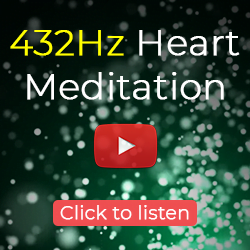Let’s discuss some of the most common ways to use binaural beats for sleep and anxiety.
In recent years, binaural beats have become a popular tool for reducing stress and improving sleep.
Binaural beats are sound waves that have been specifically designed to stimulate different parts of the brain for therapeutic purposes.
These sound frequencies can help to reduce anxiety, enhance focus, and improve relaxation levels—all essential elements when it comes to getting quality sleep.
In this blog post, we’ll explore six ways you can use binaural beats for sleep and anxiety to reduce your stress levels and get a better night’s rest.
How do binaural beats work?
Binaural beats work by creating a slight difference in pitch between two different tones that are played simultaneously.
This difference creates a third tone, known as the binaural beat, which is said to have various effects on the brain.
Some people believe that binaural beats can help to improve sleep quality, reduce stress and anxiety, and promote relaxation.
The different types of binaural beats
There are four primary types of binaural beats: pure tones, entrainment, isochronic tones, and monaural beats.
Pure tones are simply two sine waves with the same frequency but different amplitudes that are played through headphones.
When these two waves mix together in the brain, they create a third wave with a frequency equal to the difference between the two original waves.
This is called the binaural beat.
Entrainment is when the binaural beat is used to influence brainwave activity.
The most common use of entrainment is to increase alpha brainwaves in order to promote relaxation.
Isochronic tones are a type of entrainment that uses regular pulses of sound instead of continuous tones.
Monaural beats are created when a single tone is played in each ear.
These four types of binaural beats can be used to promote different states of consciousness and relaxation.
How to use binaural beats for sleep
Binaural beats can be an effective way to help you fall asleep and stay asleep. Here’s how to use them:
1. Pick a binaural beats track that is designed for sleep.
There are many different kinds of binaural beats tracks available online, with a simple search on YouTube you may find what is all about.
If you want something more trustworthy and also professional, I recommend Ennora beats.

2. Make sure you are comfortable and in a relaxing environment before you start listening to the track.
3. Listen to the track with headphones at a moderate volume. You should be able to hear the beats, but they shouldn’t be too loud or overwhelming.
4. Allow yourself to drift off to sleep. The binaural beats will help guide your brainwaves into a state of relaxation, making it easier for you to fall asleep naturally.
5. If you find that the binaural beats are keeping you awake, try turning down the volume of your headphones or switching to a softer track.
6. Listen to the binaural beats for 30 minutes to an hour each night before bedtime to help you get a good night’s sleep.
By following these steps, you can use binaural beats to help you relax and drift off to a peaceful sleep.
How to use binaural beats for anxiety
Binaural beats are a type of auditory illusion created by playing two different auditory signals in each ear.
The brain perceives the difference in frequency as a pulsing beat, even though no such physical beat exists.
Binaural beats have been used for centuries to help people relax and focus, and more recently, to help people with anxiety disorders.
There is some scientific evidence to suggest that binaural beats can help reduce anxiety.
One study found that participants who listened to binaural beats for 30 minutes had lower levels of cortisol, a stress hormone, than those who listened to relaxing music or no music at all.
Another study found that participants who listened to binaural beats had reduced anxiety and improved mood after exposure to a stressful event.
If you’re looking for a natural way to reduce anxiety, binaural beats may be worth trying.
There are many different ways to use binaural beats, so find what works best for you and give it a go!
To begin, find a comfortable place to sit or lie down and plug in your headphones. Make sure that the volume is set at a comfortable level.
Next, search for binaural beats specifically designed to reduce anxiety.
Many of these are available online, but if you want a professional product, make sure to check Ennora beats.
Once you’ve found your track, press play and let the binaural beats wash over you.
As you listen, focus on your breathing and use it to help relax your mind and body while the binaural beats do their work.
If your mind starts to wander, gently bring it back to focusing on your breath and the beats.
Continue this process for 10–20 minutes each day until you start to feel more relaxed and less anxious.
Conclusion
Binaural beats are a great way to step up your self-care routine and reduce the symptoms of sleep deprivation and anxiety.
We’ve outlined 6 ways that you can use binaural beats to help improve your mental and physical health, so now it’s time for you to find out which one works best for you!
With these tips in mind, we hope that you’ll be able to get better restful nights with fewer worries and anxieties.

